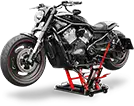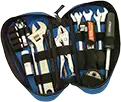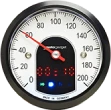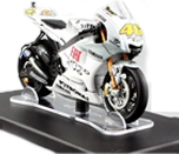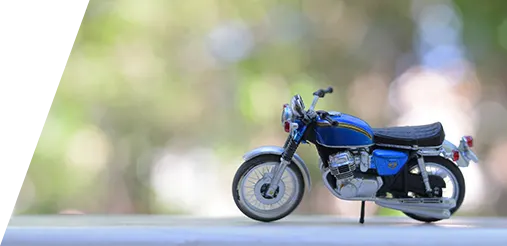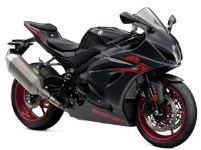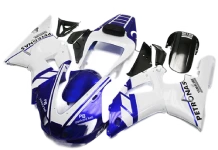The system of parts known as motorcycle suspension supports the weight of the rider and the motorcycle while also dampening shocks and vibrations from the road. It is essential to a motorcycle’s general performance, rider safety, and comfort.
Understanding various motorcycle suspension parts
Motorcycle suspension maintenance is essential for your safety and performance. More than simple seal replacement or oil changes are required. Find a service provider who will completely strip all the components and inspect each separately. You can only have a well-maintained motorcycle by doing this. The following is a description of the various parts that make up a motorcycle suspension system:
Motorcycle Forks:
The motorcycle forks at the front of the motorcycle are the most noticeable component of the suspension system. The front wheel is supported by two tubes, joined to the frame by three clamps. In response to road imperfections, the forks compress and rebound, absorbing the shock and ensuring the front wheel stays on the ground.
Shock Absorbers:
The motorcycle’s shock absorbers also referred to as dampers, are found at the back. We comprise a piston that moves through oil and a spring. The oil flows through the piston as the spring contracts to absorb the shock and lessen rebound when the rear wheel hits a bump.
Springs:
The front and rear suspension systems contain springs that offer the support required to keep the motorcycle level. we compress and rebound in response to road imperfections, allowing the suspension system to absorb the shock.
Linkage:
A linkage is sometimes used in motorcycle suspension systems to join the shock absorber and swingarm. This can enhance handling and give the driver more control over the rear suspension.
Swingarm:
The rear portion of the frame that supports the rear wheel is known as the swingarm. The rear wheel can move up and down in response to road bumps because it pivots on a pivot bolt.
How each component interacts with the others to dampen vibrations and shock
The suspension system on a motorcycle dampens the shock and maintains stability when it comes into contact with a bump or rough terrain. The shock absorbers absorb the shock and lessen the rebound, while the forks compress and rebound. The swingarm permits the rear wheel to move up and down while the springs provide the support needed to keep the motorcycle level. Suspension systems come in a variety of forms, including:
Telescopic:
The most typical style of motorcycle suspension is telescopic. We are made of two tubes that support the front wheel while responding to road imperfections by compressing and rebounding.
Inverted telescopic suspension systems have a larger tube at the top and a smaller one at the bottom, similar to telescopic suspension systems. More rigidity and strength are provided by this design.
Single shock:
Swingarm-mounted single-shock absorbers are used in single-shock suspension systems. A more portable and lightweight suspension system is offered by this design.
Duolever:
Duolever suspension systems have two distinct control arms connecting to the front wheel, a novel design. This provides high levels of stability and precise handling.
An essential motorcycle component is the suspension system, which enables the rider to maintain stability and control in challenging terrain. Forks, shock absorbers, springs, links, and swingarms work together to control and support the various parts as they absorb shocks and vibrations. Suspension systems come in various forms, each with a special design and advantages.
Advantages of a Quality Suspension System
Any motorcycle needs a good suspension system because it improves the riding experience in several ways. A motorcycle’s handling, safety, and performance can be greatly enhanced through upgrades or custom tuning, making for a more pleasurable riding experience.
Riders should select premium components and collaborate with knowledgeable experts to ensure the best results. The advantages of having a good motorcycle suspension system include the following:
Enhanced control and stability
Even on uneven and bumpy terrain, a strong suspension system guarantees that the motorcycle will remain balanced and stable. This is especially crucial when making tight turns or traveling at high speed. The motorcycle will handle more predictably with a well-tuned suspension system, giving the rider more assurance and control.
Increased comfort and less fatigue for the rider
Riding a motorcycle over difficult terrain can be physically taxing and exhausting. A good suspension system can reduce the majority of shocks and vibrations on the rider’s body. This makes the ride smoother and more comfortable, increasing endurance and lessening rider fatigue.
Better maneuverability and control
A good suspension system can adjust to various riding circumstances, giving the rider control and maneuverability. For instance, a suspension system that absorbs shocks and vibrations will enable the rider to maintain control and balance when riding on a rough, rocky trail. In contrast, a stiffer suspension system may be preferable for track riding or aggressive cornering.
Improved acceleration and braking
Additionally, braking and acceleration can be made better with a good suspension system. The motorcycle can be kept stable and kept from diving when braking by a properly tuned suspension system, which can lead to instability and loss of control. Similar to how a good suspension system can keep the rear wheel on the ground while accelerating, this can enhance traction and acceleration.
Safety and performance
A motorcycle’s suspension system dampens shocks and vibrations brought on by irregular road surfaces, bumps, and impacts. Several parts comprise the suspension system, including the fork, shock absorber, spring, and linkage. These parts work in distinct mechanical ways to provide safety, even in emergency situations.
Conclusion
The suspension greatly influences a motorcycle’s handling, stability, and rider comfort. A good suspension system can greatly improve riders’ experience by giving them more assurance and control while driving. Riders must pay close attention to the suspension system of their motorcycles, regularly maintaining it and updating it as necessary.
The suspension system on a motorcycle should be prioritized, and riders should take the necessary actions to maintain and upgrade it as needed. They will be able to ride safer, more comfortably, and more leisurely.

























